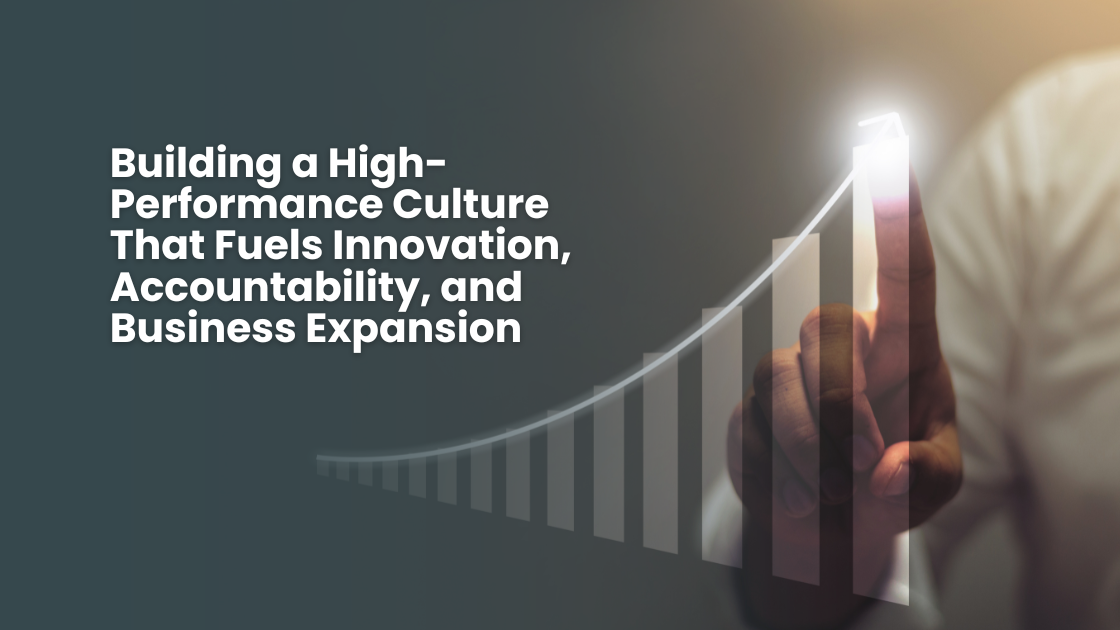Culture is not just a buzzword—it’s the invisible engine that drives every successful business forward. While strategy sets the direction and systems create the structure, it is culture that determines whether a company can truly scale, innovate, and thrive. In today’s fast-moving, digitally connected world, building a high-performance culture is not a luxury—it’s a necessity. It’s the difference between a business that simply survives and one that leads, disrupts, and expands with purpose.
A high-performance culture is more than a team that works hard. It’s a collective mindset and set of behaviors that prioritize excellence, ownership, and constant evolution. It’s rooted in clarity, driven by purpose, and sustained by trust. When done right, it fuels innovation, drives accountability, and becomes a powerful catalyst for business expansion.
The foundation of any high-performance culture is clarity. Without it, even the most talented teams will struggle to perform at their best. Clarity begins with a shared vision—where are we going and why? Leaders must communicate this vision consistently and compellingly, connecting every team member’s role to the bigger picture. When people understand how their work contributes to something larger, motivation becomes intrinsic, and alignment becomes natural.
But clarity isn’t just about the destination; it’s also about the rules of the game. High-performance cultures set clear expectations around goals, behaviors, and values. This creates a common language and shared standards that guide decision-making and collaboration. It eliminates ambiguity, reduces friction, and empowers people to take action with confidence.
Equally vital is the principle of accountability—not as a tool for blame, but as a foundation for trust. In a high-performance culture, accountability means owning outcomes, following through on commitments, and learning from mistakes. It’s about creating a space where people are encouraged to take initiative, speak up, and challenge the status quo without fear. This kind of psychological safety—combined with a results-oriented mindset—enables real growth, both individually and collectively.
Innovation thrives in cultures where people are not only allowed but expected to experiment, iterate, and think differently. To foster this, businesses must create environments where curiosity is celebrated, and failure is seen as part of the learning process. Leaders must model vulnerability, sharing lessons learned from their own missteps and encouraging open dialogue. Innovation doesn’t happen in tightly controlled, fear-driven workplaces. It grows in cultures that reward creativity, collaboration, and risk-taking.
Recognition is another key driver of performance. Celebrating wins—both big and small—reinforces desired behaviors and keeps momentum alive. In high-performance cultures, recognition is not reserved for end-of-year awards but is embedded into the daily rhythm of the workplace. Whether it’s peer-to-peer shoutouts, leadership acknowledgments, or data-driven dashboards highlighting progress, recognition fuels engagement and encourages repeatable excellence.
But culture isn’t built on values written on a wall—it’s built on what leaders do every day. Leadership must model the behaviors they expect from others. This includes transparency, humility, decisiveness, and a commitment to continuous improvement. Culture is contagious, and the tone at the top sets the tone for everyone else. Leaders who embody high-performance values create a ripple effect throughout the organization.
As businesses scale, maintaining culture becomes more challenging—but also more critical. Growth brings complexity, new hires, and new markets. Without intentional effort, culture can dilute. That’s why scalable systems for onboarding, feedback, communication, and development are essential. These systems ensure that as the business expands, the cultural DNA remains strong, and the values continue to guide behavior at every level.
Investing in people is a non-negotiable. High-performance cultures prioritize learning, growth, and development. They provide clear pathways for advancement, mentorship opportunities, and access to tools that help people stretch beyond their current roles. When employees see a future within the organization, they bring more to the present. This creates a virtuous cycle—ambitious people helping the business achieve ambitious goals.
Diversity also plays a critical role. Innovation and performance are amplified when different perspectives, backgrounds, and ideas are welcomed. Inclusive cultures don’t just check boxes—they actively seek out and leverage the strength of diversity. This means creating structures where all voices are heard, bias is addressed, and decision-making is inclusive. In doing so, businesses not only build better solutions but also better teams.
Ultimately, a high-performance culture isn’t created overnight. It’s the result of consistent, intentional actions taken over time. It’s built by leaders who understand that culture is a strategic asset—not a side project. When companies invest in building a culture that prioritizes innovation, accountability, and excellence, they unlock a level of performance that makes rapid, sustainable business expansion not just possible, but inevitable.
In a world of constant change and fierce competition, culture is your edge. Build one that drives performance, and you’ll build a business that leads.
